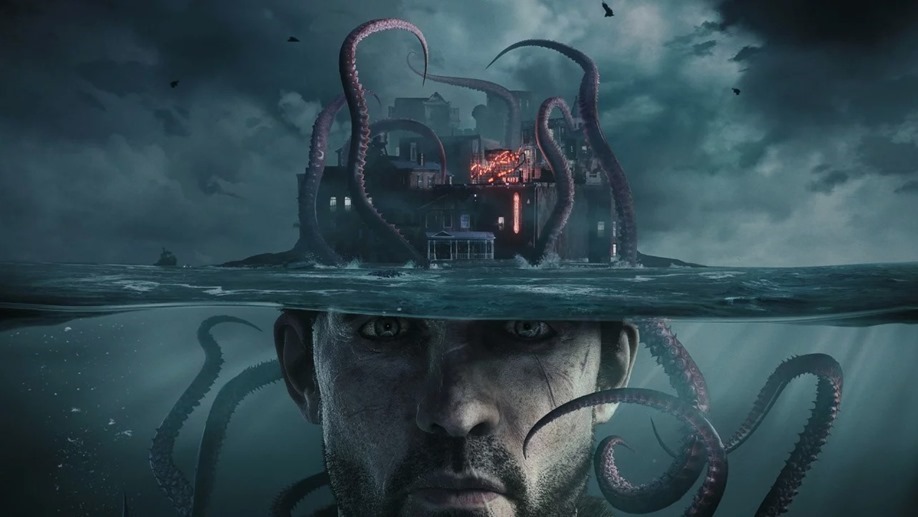
I think a lot of people misunderstand what makes HP Lovecraft unique amongst horror authors. In trying to adapt the man’s fiction, many are often drawn to the more outwardly horrific factors such as the esoteric cults, the hideous creatures and the secret organisations pulling the shadowy strings of our society. It’s much easier to channel these elements and tell a scary story with them, but few manage to delve into what really makes Lovecraft’s work so terrifying: The existential nightmare of it all. The attempt at trying to understand something so beyond our realm of comprehension that it dwarfs us in importance.
To Lovecraft, people were insignificant. Merely ants taking up space that was governed by powers we could never hope to understand. The horror doesn’t stem from violence or supernatural elements. Those are parts of it, yes, but the true horror of his work is futility. That no matter what we as human beings do, it will never amount to anything in the cosmic scheme of things, and I couldn’t help but shake that feeling when playing The Sinking City, which is both a good thing and a bad thing.
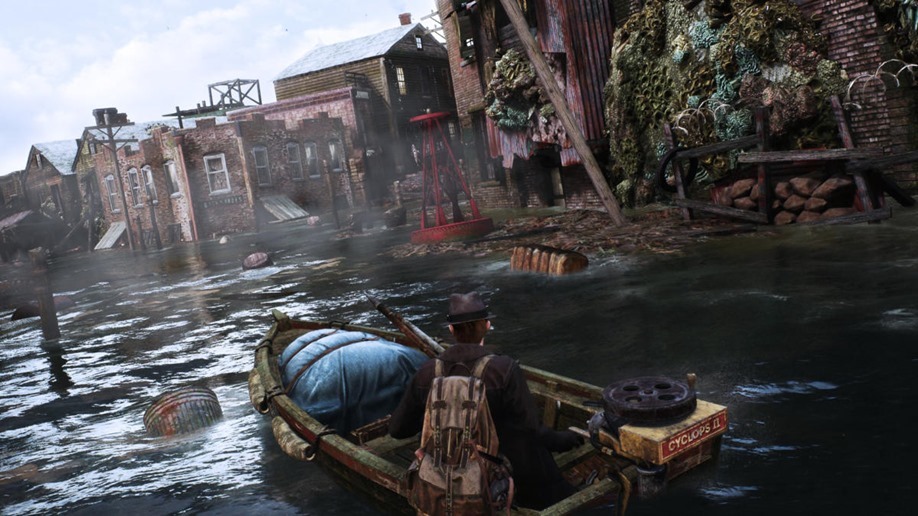
The Sinking City will see you step into the constantly soggy boots of Charles Reed, a private detective who arrives in Oakmont to investigate a string of disappearances he believes may be connected to a series of terrifying visions he’s been experiencing. From the get-go, it’s clear that Oakmont is the star of this game. It’s unlike any location I’ve explored in a video game, a fishing town separated from the mainland that’s been hit by a supernatural flood of some kind. The houses are falling apart, the wood rotting from the water, while mounds of dead coral burst forth from the streets and dead sharks and whales with massive, bleeding chunks cut from their flesh dot the destroyed streets.
Whole parts of the town have been submerged underwater, forcing Charles to sail across in a dinghy while avoiding debris. It’s depressing, omnipotent and enthralling. Everything feels just unnatural enough to be uncomfortable; like a normal town caught between prosperity and ruin at the same time. And yet, despite all the effort put into making Oakmont so visually representative of the game’s themes, it amounts to very little.
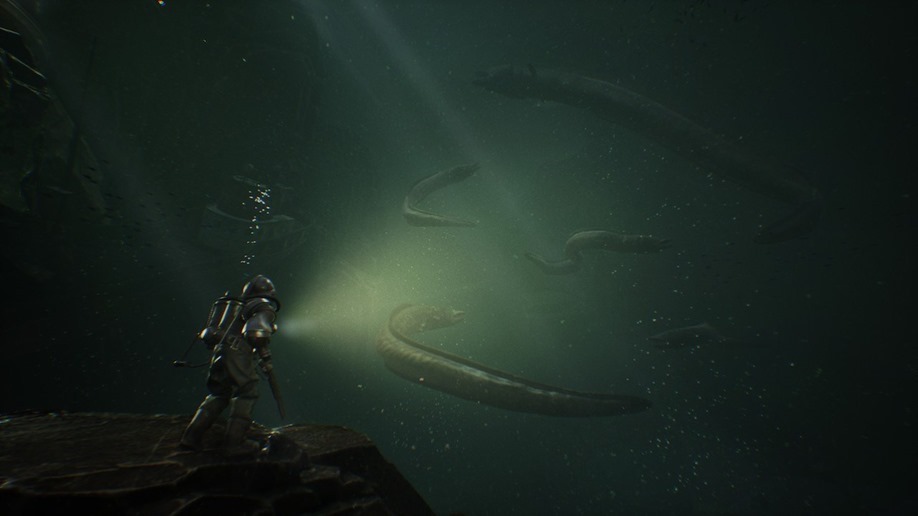
The Sinking City is a blended mix of third-person shooter and mystery game. Charles Reed will make his way around the districts of Oakmont and solve cases presented to him by a series of colourful characters and truth be told many of these are quite exciting. There’s some fantastic creative writing on display here, playing with the supernatural elements to make for some stories that are truly unique.
My problem is they all play exactly the same. Show up at a location, find the clues, see a playback of the events (thanks to some kind of power in Reed’s head), follow the lead to the next location. It’s repetitive, to say the least, but I enjoyed these investigations far longer than I thought I would. The Sinking City has a neat Deduction system that allows players to draw their own conclusions from the clues they pick up, often times resulting in vastly different outcomes. It’s a shame that many of these outcomes are so obviously telegraphed by the game, robbing many of this mysteries of any lasting impact.
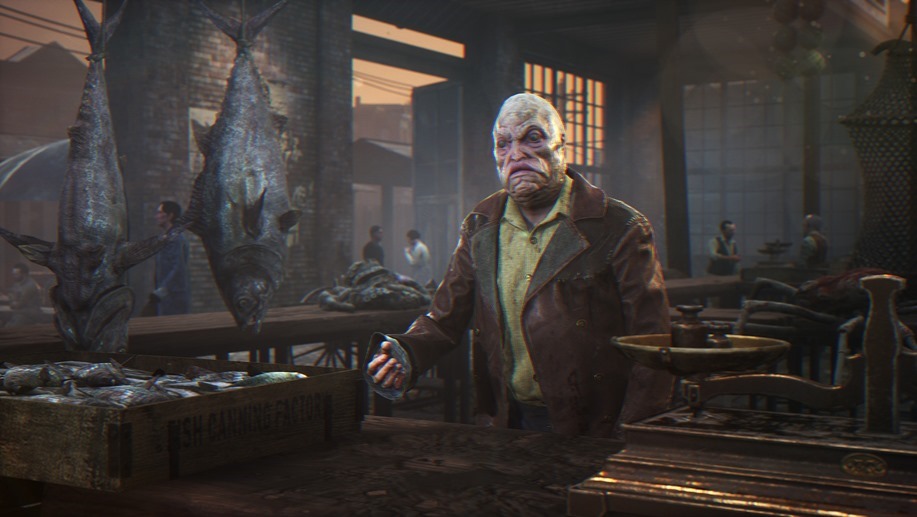
I firmly believe The Sinking City could have been a much shorter game and it would have greatly benefitted from the more concise experience. Quests are riddled with the whole, “Sure, I can help you. But you gotta help me first” process resulting in many of the more urgent missions bloating out to such an extent that lose whatever power they initially possessed. That being said, I was still compelled to see the main story through to its conclusion. There are enough intrigues and unique characters I wanted to talk to just abandon it, despite it eventually culminating in an ending that falls flat despite its grand build-up. Yet while I enjoyed and frequently appreciated the side characters and the often fantastic voice acting given to them, I think The Sinking City’s other large problem is Charles Reed himself.
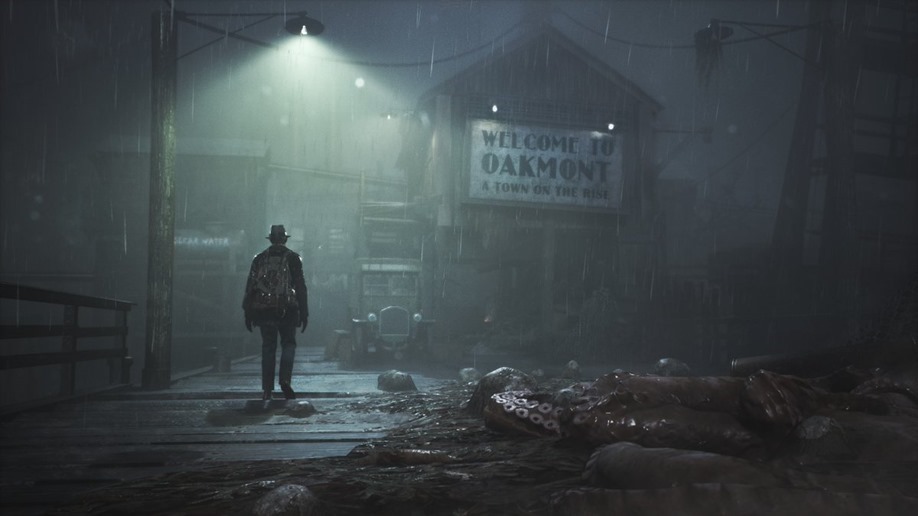
Wooden, one note and perplexingly unmoved by the impossible events taking place around him, Reed is the embodiment of everything non-Lovecraftian. He seems to understand every mystery he encounters, never stopping to consider how strange any of this really is. It doesn’t help that his voice acting is so monotone I thought for a good deal of time that it was merely text-to-voice speech. Reed is attempting to understand why he’s been receiving such vivid and bizarre visions yet always shrugs them off, totally unphased by fish people roaming the streets (bar one sentence of confusion) or literal flesh abominations attacking him in alleys.
The game tries to implement a sanity metre in an attempt to convey his lack of understanding mechanically, but a single useable anti-hysteria injection mends everything, meaning the metre is just a way of showing spooky images on the screen while distorting the environment. It’s an interesting mechanic that has, unfortunately, been wasted.
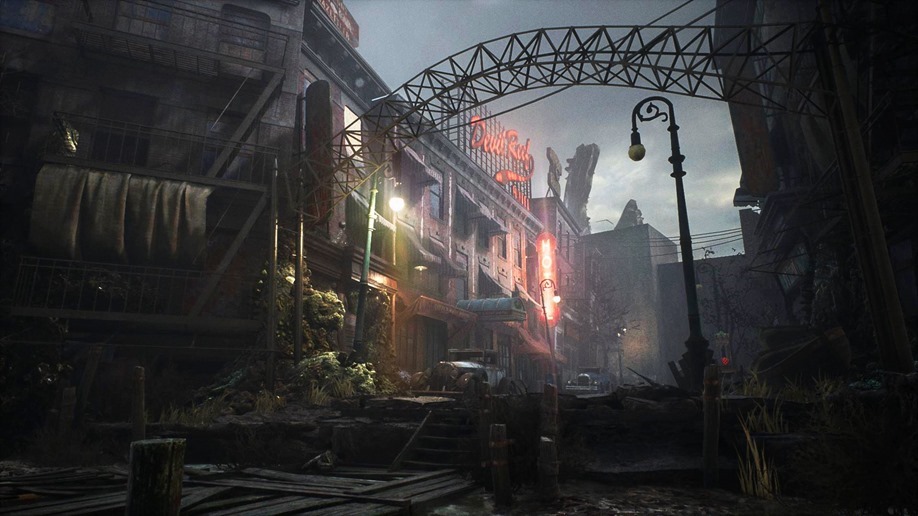
And I think that sentiment can be said for a good deal of The Sinking City. While visually unique and intriguing, Oakmont is hollow. NPC’s only respond to you when aimed at with a gun with most of them just roaming around without making a single sound. The gunplay is serviceable but lacks any kind of punch with the rifle feeling just like the 1911 pistol despite the damage boost. Scavenging for parts is cool until you raid a “Quarantine Zone” and make it out with enough supplies that health or ammo is never a concern. Interiors often look identical with hard-cut-to-black loading screens as you enter and citizens warping and disappearing as they make their aimless way around the city which is better explored with fast travel points because despite how gorgeous it all is there’s no substance.
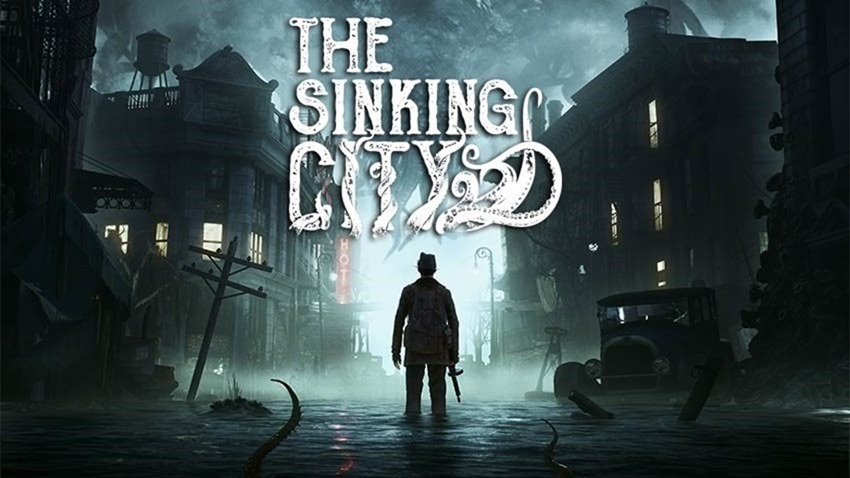
Which I think is the great tragedy of The Sinking City. HP Lovecraft was all about substance, using multi-layered, theoretical metaphors to tell stories that, while many considered pulpy and silly, were far denser than they appeared. The Sinking City strikes you initially as a deep exploration of Lovecraftian fiction and on the surface, it certainly looks that way, but once you look a little deeper, it’s hollow. The homage it pays to the stories that inspired it is fantastic, and possibly stands up there as one of my favourite adaptions of the Cthulhu mythos. But as a game, it largely falls flat due to its repetition, unpolished bugs and poorly paced yet intriguing narrative.
Last Updated: June 25, 2019
| The Sinking City | |
|
The Sinking City is a great game for fans of Lovecraftian horror and delivers some stellar quest writing but unfortunately stumbles due to overused and uninspired mechanics, a bland protagonist and general lack of life
|
|
|---|---|
| The Sinking City was reviewed on PlayStation 4, PC | |
|
71 /
100
| |





















Jacques Van Zyl
June 26, 2019 at 10:55
I was so excited for this after having been let down by the latest Call of Cthulhu. Is this worth a buy for a hardcore Lovecraft fan, or would it be best waiting for a sale perhaps?
JacoZAB
June 26, 2019 at 11:05
I’m enjoying it a lot, but I guess different strokes for different folks
Brad Lang
June 26, 2019 at 16:12
Put it this way, as someone who appreciates Lovecraftian horror, I got a lot out of it. As someone who appreciates video games, I got less out of it.
Admiral Chief
June 26, 2019 at 08:21
Looks fishy
Craig "Crios" Boonzaier
June 26, 2019 at 13:39
One day someone will make a Lovecraftian that lives up to the name.